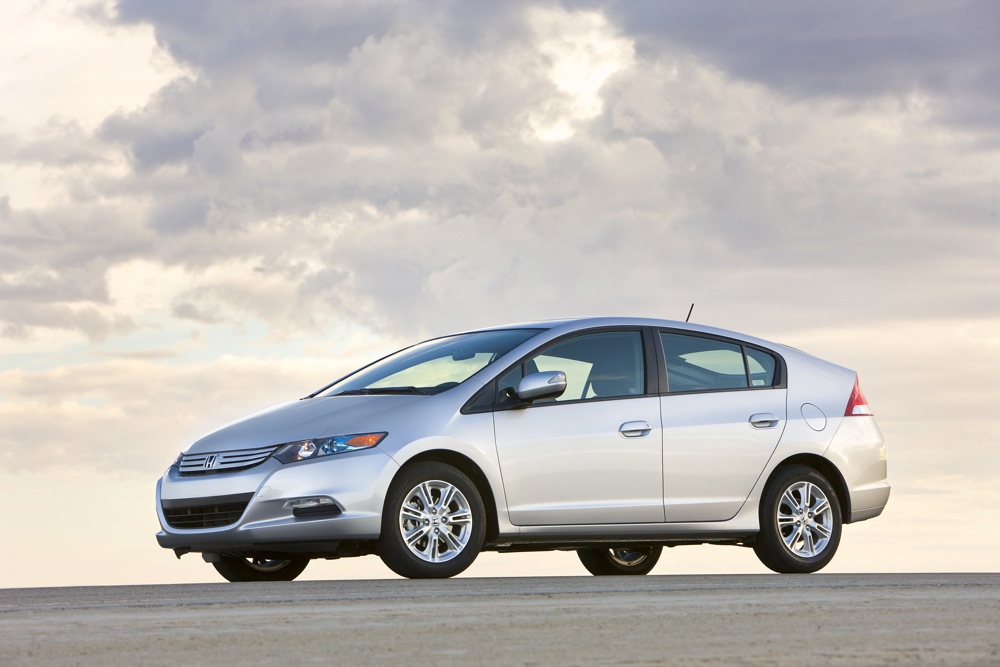
2009 Honda Insight - production version first photo.

2010 Toyota Prius
Why do the exterior design elements of many hybrid models seem so similar? A commenter awhile back said of the new Honda Insight, it bears a striking resemblance to the new Toyota Prius. Coincidence? Not likely. Is Honda trying to copy the Prius in hopes of sales success? Also highly unlikely. So why do they and so many other hybrids on the market look at least somewhat similar and are immediately recognizable as hybrids?
Hybrid design is driven solely be aerodynamics. There is little room left for originality after the designer take aerodynamics to the extremes. The wedge shape profile, and high roof cut along with the stiff drop off in the rear all contribute either to less drag, or a lower fontal area. The designs yield a coefficient of drag in the neighborhood of .27. This low number increases fuel efficiency slightly. But every slight improvement is needed to help hybrids achieve maximum efficiency.
Once the design team has maximized aerodynamics, the stylists can come in and make subtle changes such as grill design, front and rear fascias, etc. However, the design changes are then retested for aerodynamic efficiency and then evaluated. The result, a car that is aerodynamically efficient, but looks like other cars designed in the same manner.
Even without seeing the Prius, Honda engineers could design an Insight from the ground up and end with a result that appears identical to a Prius. Copying a Prius is not their end goal, but aerodynamically, the Insight and the Prius are nearly perfect for a car and aerodynamic perfection will always look alike.
Quoting the commenter I referred to above, "Ok, this car looks EXACTLY like the Prius. Not just kind of like it, EXACTLY like it. Its a shame the old Insight was cool looking!
Unfortunately, orignality does not exist and can not exist in a fuel efficient design and the old Insight, though distinctive, simply did not meet aerodynamic requirements and its design had to be altered for the sake a 1 to 2 mpg.
Source: Wards Auto












